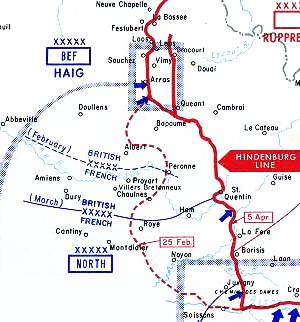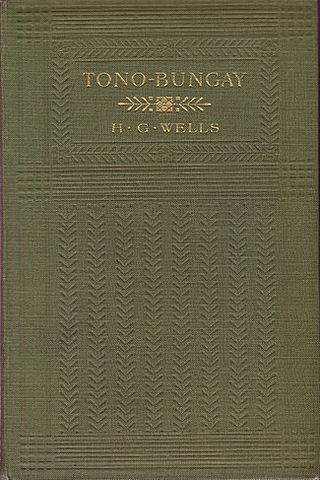
Herbert George Wells was an English writer. Prolific in many genres, he wrote more than fifty novels and dozens of short stories. His non-fiction output included works of social commentary, politics, history, popular science, satire, biography, and autobiography. Wells' science fiction novels are so well regarded that he has been called the "father of science fiction".

The Battle of the Somme, also known as the Somme offensive, was a battle of the First World War fought by the armies of the British Empire and the French Third Republic against the German Empire. It took place between 1 July and 18 November 1916 on both sides of the upper reaches of the river Somme in France. The battle was intended to hasten a victory for the Allies. More than three million men fought in the battle, of whom more than one million were either wounded or killed, making it one of the deadliest battles in all of human history.

The Open Conspiracy: Blue Prints for a World Revolution was published in 1928 by H. G. Wells, when he was 62 years old. It was revised and expanded in 1930 with the additional subtitle A Second Version of This Faith of a Modern Man Made More Explicit and Plain. In 1931 a further revised edition appeared titled What Are We to Do with Our Lives?. A final version appeared in 1933 under its original title. Many of its ideas are anticipated in Wells's 1926 novel The World of William Clissold.

The Hindenburg Line was a German defensive position built during the winter of 1916–1917 on the Western Front in France during the First World War. The line ran from Arras to Laffaux, near Soissons on the Aisne. In 1916, the Battle of Verdun and the Battle of the Somme left the German western armies exhausted and on the Eastern Front, the Brusilov Offensive had inflicted huge losses on the Austro-Hungarian armies and forced the Germans to take over more of the front. The declaration of war by Romania had placed additional strain on the German army and war economy.

Tono-Bungay is a realist semiautobiographical novel written by H. G. Wells and first published in book form in 1909. It has been called "arguably his most artistic book". It had been serialised before book publication, both in the United States, in The Popular Magazine, beginning in the issue of September 1908, and in Britain, in The English Review, beginning in the magazine's first issue in December 1908.

"The Land Ironclads" is a short story by British writer H. G. Wells, which originally appeared in the December 1903 issue of the Strand Magazine. It features tank-like "land ironclads," 80-to-100-foot-long armoured fighting vehicles that carry riflemen, engineers, and a captain, and are armed with semi-automatic rifles.

Robert Georges Nivelle was a French artillery general officer who served in the Boxer Rebellion and the First World War. In May 1916, he succeeded Philippe Pétain as commander of the French Second Army in the Battle of Verdun, leading counter-offensives that rolled back the German forces in late 1916. During these actions he and General Charles Mangin were accused of wasting French lives. He gives his name to the Nivelle Offensive.

Opposition to World War I was widespread during the conflict and included socialists, anarchists, syndicalists and Marxists as well as Christian pacifists, anti-colonial nationalists, feminists, intellectuals, and the working class.
The Tenth Army was a Field army of the French Army during World War I and World War II.
Edward Ingram Watkin was an English Catholic philosopher, pacifist and writer.

The Allied leaders of World War I were the political and military figures that fought for or supported the Allied Powers during World War I.

Operation Alberich was the code name of a German military operation in France during the First World War. Two salients had been formed during the Battle of the Somme in 1916 between Arras and Saint-Quentin and from Saint-Quentin to Noyon. Alberich was planned as a strategic withdrawal to new positions on the shorter and more easily defended Hindenburg Line. General Erich Ludendorff was reluctant to order the withdrawal and hesitated until the last moment.

Mr. Britling Sees It Through is H.G. Wells's "masterpiece of the wartime experience in south eastern England." The novel was published in September 1916.

The Soul of a Bishop is a 1917 novel by H. G. Wells.

Meanwhile is a 1927 novel by H. G. Wells set in an Italian villa early in 1926.
The New Machiavelli is a 1911 novel by H. G. Wells that was serialised in The English Review in 1910. Because its plot notoriously derived from Wells's affair with Amber Reeves and satirised Beatrice and Sidney Webb, it was "the literary scandal of its day".
God the Invisible King is a theological tract published by H. G. Wells in 1917.

A Year of Prophesying collects 55 newspaper columns written by H. G. Wells in 1923 and 1924.

The Holy Terror is a 1939 work by H. G. Wells that is in part an analysis of fascism and in part a utopian novel.
H. G. Wells (1866–1946) was a prolific English writer in many genres, including the novel, history, politics, and social commentary, and textbooks and rules for war games. Wells called his political views socialist.















